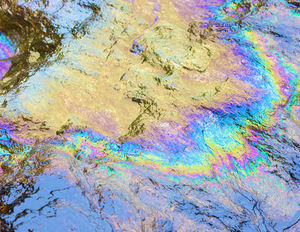ISSS608 2018-19 T3 Assign SAMEER PANDA Visualizations
|
|
|
|
|
|
Insights 10 trends on chemical contamination - Date, place, category (reading frequency)
1. Ammonia trends a. Date i. Average value has lowered by a factor of 3, from 1998 to 2016. ii. Value increased to dangerous levels during 2000,2003,2006 and 2014. iii. Between 2002-2009, periods between jan-feb & oct-nov had high levels of avg values. iv. 2010, 2014 January and 2014 October had high readings nearing 1.0 mg/L, 5 times more than permissible limits b. Place i. Two places, kohsoom and Tansanee have higher readings than other places. ii. Tansanee has reading for ammonia starting only from 2009, and had the highest average reading on 2014. c. Category i. Ammonia is one among the group of most readings taken among all chemicals, 3.5%. ii. Readings taken closer to average number of readings were between 2002 to 2009. iii. 2010 onwards, more than 300 readings were taken for the first time. 2. Biochemical Oxygen trends a. Date i. Between April to August 1998, biochemical oxy exceeded the dangerous levels of 8 mg/L twice out of three spikes in measurement. ii. Three times in a space of 4 years, the readings spiked to above 5mg/L, before stabilizing after Dec 2002. iii. Every year since 2003, the readings spiked between Jan-Mar above the average mark. b. Place i. Kohsoom is one of the venues where readings were taken from 1998 to 2016. ii. Kohsoom had an abnormally high reading of 8 and 4 times the permissible limit during Aug 1998 and october 2002 respectively. iii. Readings for Tansanee were available from 2009, during which the avg readings exceeded the dangerous levels many times, having a peak of 5 times the dangerous levels on feb 2016. c. Category i. Bio Oxy is eighth in the most readings taken parameter, comprising of 3.3% of total. ii. Between 2002 and 2013, consistency is maintained closer to average number of readings. iii. Before 2002, less than average readings were taken. 3. Cadmium trends a. Date i. Recent readings of Cadmium levels have been below 0.5 ug/l ii. Two readings of above 8ug/L were 6 years apart, between May 2001 to 2007. iii. The average readings of Cadmium were very low from the dangerous levels between 1999-2008. b. Place i. Between 1998 and 2009, 5 places had readings more than permissible levels of cadmium. ii. Kohsoom had a very high reading of 45.6 ug/l on jun 1998 and once in july 2001 above 17 ug/l. iii. Boonsri had three readings above the dangerous levels on 1999, 2005 and 2007 iv. Busarakhan had two readings much higher than permissible limits between 1999-2000, but has stabilized since. v. Only Somchair after having stable readings in the past, had a single reading of more than twice the dangerous levels in April 2009 c. Category i. Cadmium readings were for over 2.2% of total readings. ii. There are over 500 near zero values out of 2963 readings of cadmium. iii. Recent cadmium readings have been lower than average number of readings taken over the years. iv. Period between march 2002 and dec 2007 had more consistent readings. 4. Chloride trends a. Date i. Chloride readings had reached a peak of over 100mg/L in Oct 2005 and Dec 2013. ii. Recently, between Sept 2014 and Dec 2016, many of the avg readings have crossed the total avg readings taken over the years. iii. Overall, the average reading values of chloride has remained stable. b. Place i. Sakda has seen average readings of over 100mg/L six times since Sept 2002. Half of those readings were seen since Dec 2013, starting with an avg reading of 468mg/L. ii. Tansanee had high readings ever since it was first taken from Jan 2009. Readings have remained on a higher side since Jan 2014. c. Category i. Chloride is among the top 10 salts having readings of over 2.8% in total. ii. Less than navg readings were taken until Feb 2002. iii. More consistant readings were taken after Nov 2009. 5. Chromium trends a. Date i. Chromium readings were very high between April 1998 to Aug 2003. ii. The readings were much stable between Jan 2004 to Sept 2012. iii. There has been a decline in the Chromium average values from May 2013 to Dec 2016. b. Place i. Sakda had an avg reading of 147ug/L during Apr 1998, resulting in the elevated overall average. ii. Kohsoom did not have any readings taken between Dec 2007 and Jan 2010. iii. From Jan 1999, Kohsoom had very high chromium readings until Aug 2003. c. Category i. Among the readings taken across all categories, Chromium has the highest readings among heavy metals at 2.2%. ii. On short periods between 2001-2002 and 2003, the number of readings taken had dropped. Sporadic readings were taken between the period of 2007 and 2010. iii. Since March 2012, consistently less readings were taken with the exception of Sept 2014. 6. Copper trends a. Date i. Copper readings were consistently higher than avg in the periods between April 1998 to Mar 2009. ii. The avg readings had reached dangerous levels on May 2000, Feb 2002 and Aug 2003. iii. Since April 2009, the readings were lower than avg except for 6 instances between Feb 2011 and May 2016. b. Place i. Kohsoom had an average reading of 564 ug/L on Aug 2003, more than 25 times the total avg readings. ii. Kohsoom and Somchair had more readings of dangroeus levels of copper than any other place. c. Category i. Copper is among a high percentage of heavy metals found in the waterways at 2.2%. ii. The readings taken for Chromium, copper and other heavy metals are almost identical. 7. Dissolved Oxygen a. Date i. Dissolved Oxygen readings differed with the seasons.
